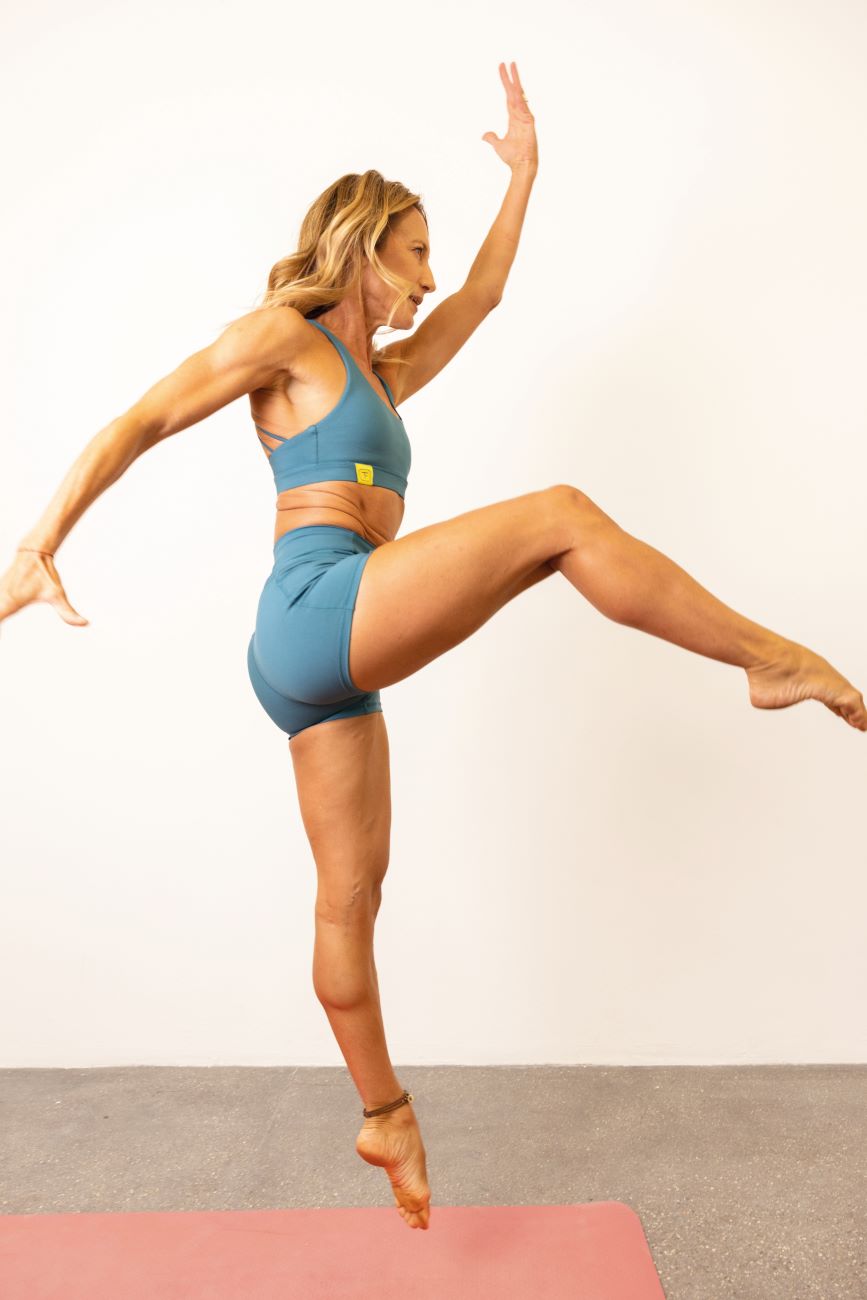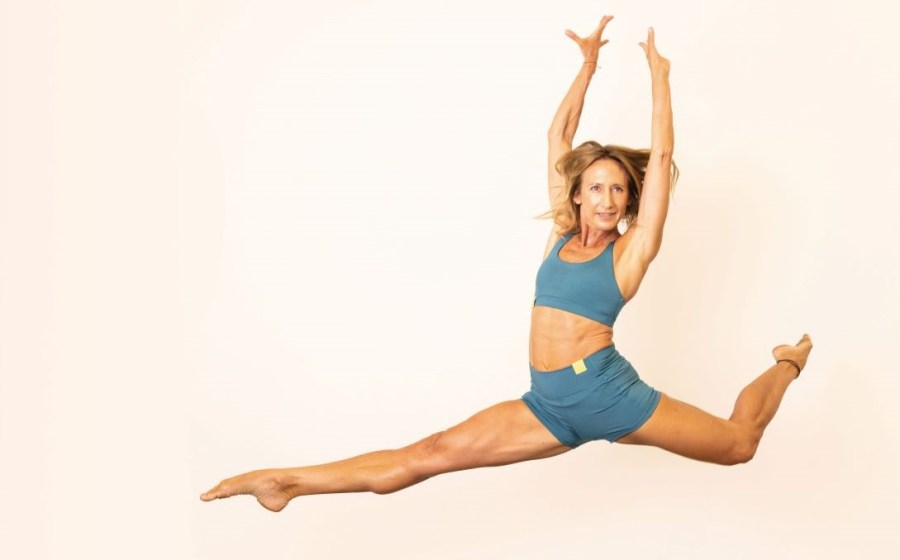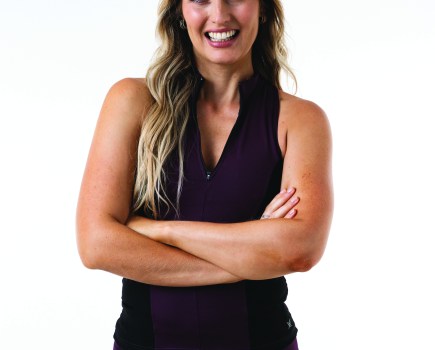Want to know the secret to having a strong, healthy body in your 30s, 40s, 50s and beyond? Hollywood PT Monique Eastwood reveals the moves you need to get fit for life.
Related: Ageing and fitness: how to stay fit through the decades
Vitality, exuberance and a lust for life are just some of the qualities celebrity PT Monique Eastwood has in abundance. Lucky for us, she’s also far from shy when it comes to sharing the secrets behind her boundless energy and super strong body. But don’t take our word for it. Eastwood’s A-list clients are keen to shower the former ballet dancer with praise, from actresses Hayley Atwell (‘She’s a secret weapon!’) and Emily Blunt (‘Monique is just the most extraordinary trainer’) to actor Stanley Tucci (‘The biceps are by Monique Eastwood’).
The good news, however, is you no longer need to be Hollywood royalty to try Monique Eastwood’s famous multi-directional movement method. Her new virtual training platform, The Eastwood Fit app, is a one-stop shop of live and on-demand workouts, programmes and challenges, where mere mortals can experience the same HIIT Power, Technique and Stretch classes she uses to sculpt A-list bodies.
Workouts for all ages
But while the new app makes Monique Eastwood more accessible and affordable, it’s safe to say she’s always been inclusive, particularly when it comes to crafting efficient and effective workouts that get incredible results. Her loyal clientele ranges from those in their 20s through to their 60s, and Monique Eastwood herself is the embodiment of a lifetime spent exercising. As Emily Blunt puts it: ‘I only had to look at her for inspiration because the woman is superhuman!’
So, just what is it about Monique Eastwood’s method that’s so great for helping people to improve and maintain their fitness in later life? We asked the trainer to reveal all…
Knowledge is power
‘I’m 55 now, and I picked up my education along the way,’ says Eastwood on the evolution of her method. ‘I certainly didn’t know everything I know now back in my 20s and 30s, but fitness, like anything in life, is a process’. Unsurprisingly, given the fluid choreography of her workouts, Eastwood’s ‘process’ began with dance. ‘I was a professional ballerina and I loved the discipline of training every day,’ she explains.
‘I was consumed by what I did and had a very passionate career. But I gave it all up when I moved to England and had children because it was traditional for mothers to stay at home with their kids at the time.’ Eastwood is the first to admit she found this period particularly hard.
Desperate to inject some movement and creativity back into her life, she began ‘messing around with aerobics instructor courses and being brilliant in that field’, before she stumbled across Pilates. ‘I became fascinated by the way Pilates analyses the anatomy and assesses where we hold our weaknesses and strengths, so I started to get more of an education by going to many different classes, courses and teachers,’ she says.
Monique Eastwood: ‘I became fascinated by the way Pilates analyses the anatomy and assesses where we hold our weaknesses and strengths.’
However, Eastwood was becoming increasingly frustrated with the fixed routines and repetitive structure of the different classes and exercise disciplines she was trying. More crucially, she also realised that she wasn’t getting everything she wanted from a workout in one class. ‘I was getting bored of listening to the same music for eight weeks in gym classes because I always knew what was coming next,’ she explains. ‘And on the other hand, I noticed my Pilates clients would lose their focus and drift off because it was mostly taught on the floor.
‘So, I started to play around with things. I’d get them off the floor and make them stand on one leg, or we’d move from one direction to the other. The result was like a dance class that incorporated the good bits I liked from all the different disciplines I’d tried, such as Pilates, Body Pump and yoga, to create a method of my own that champions everyday movement, posture and correct form and alignment.’
Monique Eastwood’s ‘Big Five’ exercises
Eastwood’s multi-directional movement method was born. It has a special focus on simple yet effective high-energy dance-inspired sequences, and is famous for creating strong lean bodies that are fit for life.
‘Many of my classes use dumbbells and resistance bands, and they follow a HIIT format because it’s so efficient and effective,’ she explains. ‘You keep your muscles strong with HIIT, as opposed to when you train over longer periods or distances, which can cause muscle breakdown. One of my 30-minute HIIT sessions will hit your cardio system, boost your bone density, increase muscle mass, fire up your endorphins and give you a great cognitive workout to keep you looking and feeling young, so it ticks all the boxes.’
Monique Eastwood: ‘Many of my classes use dumbbells and resistance bands, and they follow a HIIT format because it’s so efficient and effective.’
Through the years, Eastwood has whittled her favourite exercises down to her ‘Big Five’ power moves, which consist of squats, pliés, lunges and planks in their multiple variations, plus some kind of balance exercise such as standing on one leg. These exercises form the basis of every single workout she does and are chosen for their ability to really challenge the body, strengthen the core, pelvic floor and glutes, and work on agility, flexibility and mobility.
‘Strong, fit bodies are what I try to create,’ states Eastwood. ‘I get people coming to me from the film industry who can lift huge weights, and they say, “I’ve never felt this strong” after working with me. That’s because I develop their pelvic strength, and core strength, and train their body as a whole, like a dancer’s body, so they’re perfectly in balance and feel strong from within.’
The importance of flowing from one exercise to the next
Another key component of Eastwood’s method is the fact that you never stop moving. ‘During my classes, we constantly flow from one move to the next, and that’s the most exhausting part,’ she says. ‘There are easier transitional moves, so you can catch your breath, but my workouts are never uniform. So many of my clients say they’re quite mentally challenging, too.’
Which, says Eastwood, is one of the reasons her workouts keep her clients on their toes, both physically and mentally. ‘Flowing movements help to keep the brain engaged because you constantly have to think about what your body needs to do next, otherwise it gets mechanical, and your brain will start to switch off,’ she explains.
‘Keeping your brain engaged is one of the most important things you need as you get older, which is just one reason why exercise has been scientifically proven to be a very important thing for us to do as we age, because it’s essential that we maintain our bone density, balance, flexibility, muscle mass, cardio fitness, brain power and those endorphins. You need the whole combination.’
Fitness and ageing
While Eastwood asserts there isn’t anything she can’t do now that she couldn’t do it her 20s, she admits her attitude to exercise has changed. ‘I can still get my leg over my head, but it’s more about not pushing my leg so high because I don’t want to hurt myself or pull a muscle,’ she says. ‘I’ve toned things down a little bit as I’ve got older, and I don’t like to do long, high-intensity cardio sessions anymore, to avoid unnecessary wear and tear on my joints from repetitive movements.’
Eastwood usually spends her working day in front of a screen teaching her clients from morning until late afternoon, which she confesses is ‘exhausting, but it gives me more energy’. Undoubtedly, this regime also helps to keep her super fit, but she regularly calls upon other forms of exercise to escape the pressures of work.
‘When I overdo it, I tend to calm things down with a lovely yoga flow, or I’ll go for a little power walk and do my own little combination with some 5kg weights to challenge myself, because I need the challenge. I also love hiking. I’ll march for at least an hour nearly every day and, if I can’t do that, I’ll do at least 20 minutes. Oh, and of course, I love dancing. Good music is a big motivator of mine, so if you put some on, I will start and not stop. I can dance all day!’

‘One of my 30-minute HIIT sessions will hit your cardio system, boost your bone density, increase muscle mass, fire up your endorphins and give you a great cognitive workout to keep you looking and feeling young, so it ticks all the boxes.’ (Photography: Thomas Minnock | Clothing: Two Fit)
Monique Eastwood’s tips for exercising as you age
Fitness in your 20s:
‘You might recover faster, but now is a good time to start working on your posture and technique, and putting some work into understanding your body and how you move. The reason? Bad technique will injure you in the end. Consider investing in a personal trainer for a few sessions, so they can watch your form and help you build a strong foundation for all future movement. Then, do whatever activity you love and keep doing it.’
Fitness in your 30s:
‘You may have children, or a busy career, so it’s often a time when you’re not focusing on yourself so much. Your pelvic floor, glutes and core often become weaker and less engaged after childbirth, or from sitting at a desk all day, so work on re-engaging those key muscles to avoid hitting problems if you return to running or lifting heavier weights. If you don’t, you could run into serious problems when you hit your 40s.’
Fitness in your 40s:
‘Think about what your body needs to keep it strong and efficient. We start to lose muscle mass in our 30s, and muscle helps us to burn calories and keep our metabolisms firing. Equally, hormone levels can fluctuate a lot in our 40s, and hormonal imbalances can have a lot to do with how we metabolise. Up your daily activity with brisk walking, and increase weight training to keep weight gain at bay.’
Fitness in your 50s+:
‘Menopause is the biggest hormonal change you’ll go through in life. My advice to women is to create an exercise plan and put it in place. When you have good habits to fall back on, you’ll have a better mid-life, especially when you hit that hard period and your emotions and energy levels go haywire. Go really gently with yoga on “low” days and try more challenging workouts on the days when you’re feeling stronger.’
Read next: Monique Eastwood: ‘Big Five’ Full-Body Workout
Words: Joanna Ebsworth | Photography: Thomas Minnock | Clothing: Two Fit







